(Ebook PDF) Labor Economics 9th Edition by George Borjas 126683575X 9781266835759 full chapters
$50.00 Original price was: $50.00.$25.00Current price is: $25.00.
Labor Economics 9th Edition by George J. Borjas – Ebook PDF Instant Download/DeliveryISBN: 126683575X, 9781266835759
Full download Labor Economics 9th Edition after payment.
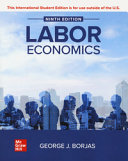
Product details:
ISBN-10 : 126683575X
ISBN-13 : 9781266835759
Author : George J. Borjas
Labor Economics , ninth edition by George J. Borjas provides a modern introduction to labor economics, surveying the field with an emphasis on both theory and facts. Labor Economic s is thoroughly integrated with the adaptive digital tools available in McGraw-Hill’s Connect, proven to increase student engagement and success in the course. All new Data Explorer questions using data simulation to help students grasp concepts Materials are fresh and up to date by introducing and discussing the latest research studies where conceptual or empirical contributions have increased our understanding of the labor market. The book has undergone Diversity, Equity, and Inclusion reviews to implement content around topics including generalizations and stereotypes, gender, abilities/disabilities, race/ethnicity, sexual orientation, diversity of names, and age.
Labor Economics 9th Table of contents:
Chapter 1: Introduction
Chapter 1 Introduction
1-1 An Economic Story of the Labor Market
1-2 The Actors in the Labor Market
The Trans-Alaska Oil Pipeline
1-3 Why Do We Need a Theory?
Summary
Key Concepts
Review Questions
Appendix 1-1: Introduction to Regression Analysis
An Example
“Margin of Error” and Statistical Significance
Multiple Regression
Appendix 1-2: Introduction to Data Files
The Current Population Survey (CPS): Basic Monthly Files
The Current Population Survey: Annual Social and Economic Supplement (CPS-ASEC)
The Current Population Survey: Outgoing Rotation Groups (CPS-ORG)
The Decennial Censuses
The American Community Survey (ACS)
The IPUMS Data Archive
Data Explorer: The Returns to a College Education
Key Concepts
Chapter 2: Labor Supply
Chapter 2 Introduction
2-1 Measuring the Labor Force
The Hidden Unemployed
2-2 Basic Facts about Labor Supply
2-3 The Worker’s Preferences
Utility and Indifference Curves
The Slope of an Indifference Curve
Differences in Preferences across Workers
2-4 The Budget Constraint
2-5 The Hours of Work Decision
Interpreting the Tangency Condition
What Happens to Hours of Work When Nonlabor Income Changes?
What Happens to Hours of Work When the Wage Changes?
2-6 To Work or Not to Work?
2-7 The Labor Supply Curve
2-8 Estimates of the Labor Supply Elasticity
Problems with the Estimated Elasticities
2-9 Household Production
The Household Production Function
Who Works Where?
Trends in Female Labor Force Participation
2-10 Correlation versus Causation: Searching for Random Shocks
2-11 Policy Application: Welfare Programs and Work Incentives
Cash Grants and Labor Supply
The Impact of Welfare on Labor Supply
Welfare Reform and Labor Supply
2-12 Policy Application: The Earned Income Tax Credit
2-13 Labor Supply over the Life Cycle
Evidence
Estimation of Life Cycle Models
Labor Supply over the Business Cycle
2-14 Policy Application: Disability Benefits and Labor Force Participation
Summary
Key Concepts
Review Questions
Problems
Data Explorer: Fertility and Labor Supply
Chapter 3: Labor Demand
Chapter 3 Introduction
3-1 The Production Function
Marginal Product and Average Product
Profit Maximization
3-2 The Short Run
How Many Workers Should the Firm Hire?
The Short-Run Labor Demand Curve for a Firm
The Short-Run Labor Demand Curve in the Industry
An Alternative Interpretation of the Marginal Productivity Condition
3-3 The Long Run
Isoquants
Isocosts
Cost Minimization
3-4 The Long-Run Demand Curve for Labor
Will the Firm Expand if the Wage Falls?
Substitution and Scale Effects
Estimates of the Labor Demand Elasticity
3-5 The Elasticity of Substitution
3-6 What Makes Labor Demand Elastic?
Union Behavior
3-7 Factor Demand with Many Inputs
3-8 Overview of Labor Market Equilibrium
3-9 Rosie the Riveter and Instrumental Variables
3-10 Policy Application: The Minimum Wage
Compliance with the Minimum Wage Law
The Covered and Uncovered Sectors
Evidence
A Saga of Conflicting Evidence: The Seattle Minimum Wage Debate
Summary
Key Concepts
Review Questions
Problems
Data Explorer: Demographics of the Low-Wage Workforce
Chapter 4: Labor Market Equilibrium
Chapter 4 Introduction
4-1 Equilibrium in a Single Labor Market
Efficiency
4-2 Equilibrium across Labor Markets
Efficiency Revisited
Wage Convergence across Countries
4-3 Policy Application: Payroll Taxes and Subsidies
A Tax Imposed on Workers
When Will the Payroll Tax Be Shifted Completely to Workers?
Deadweight Loss
Employment Subsidies
4-4 Policy Application: Mandated Benefits
Obamacare and the Labor Market
4-5 The Labor Market Impact of Immigration
The Short Run and the Long Run
Spatial Correlations
The Mariel Boatlift
Immigration and the National Labor Market
The Immigration and Minimum Wage Debates
4-6 The Immigration Surplus
Calculating the Immigration Surplus
4-7 Policy Application: High-Skill Immigration
Nazi Germany
The Soviet Union
4-8 COVID-19 and the U.S. Labor Market
4-9 Monopsony
Perfectly Discriminating Monopsonist
Nondiscriminating Monopsonist
Monopsony and the Minimum Wage
Do Many Firms Have Upward-Sloping Labor Supply Curves?
Summary
Key Concepts
Review Questions
Problems
Data Explorer: Demographic Differences in the Impact of the Pandemic
Chapter 5: Compensating Wage Differentials
Chapter 5 Introduction
5-1 The Market for Risky Jobs
The Supply of Labor to Risky Jobs
The Demand for Labor by Risky Firms
Equilibrium
Equilibrium When Some Workers Like Risk
5-2 The Hedonic Wage Function
Indifference Curves of Different Workers
The Isoprofit Curve
Equilibrium
5-3 Policy Application: How Much Is a Life Worth?
Calculating the Value of Life
5-4 Policy Application: Safety and Health Regulations
Impact of Regulations When Workers Are Unaware of the Risks
5-5 Compensating Differentials and Job Amenities
Why Do Compensating Differentials Sometimes Go the “Wrong” Way?
Compensating Differentials and Layoffs
Compensating Differentials and Income Taxes
Compensating Differentials and HIV
5-6 Policy Application: Health Insurance and the Labor Market
Summary
Key Concepts
Review Questions
Problems
Data Explorer: Compensating Differentials and the Night Shift
Chapter 6: Education
Chapter 6 Introduction
6-1 Education in the Labor Market: Some Stylized Facts
6-2 Present Value
6-3 The Schooling Model
Present Value of Age–Earnings Profiles
The Wage–Schooling Locus
The Marginal Rate of Return to School
The Stopping Rule, or When Should I Quit School?
6-4 Education and Earnings
Differences in the Rate of Discount
Differences in Ability
Ability Bias
6-5 Estimating the Rate of Return to School
Twin Studies
Instrumental Variables
6-6 Policy Application: School Construction in Indonesia
6-7 Policy Application: The Education Production Function
6-8 Do Workers Maximize Lifetime Earnings?
A Numerical Example
Selection Bias Corrections
6-9 Signaling
Pooling Equilibrium
Separating Equilibrium
The GED as a Signal
Private and Social Rates of Return
Summary
Key Concepts
Review Questions
Problems
Data Explorer: Wage Differences Across College Majors
Chapter 7: The Wage Distribution
Chapter 7 Introduction
7-1 Postschool Human Capital Investments
7-2 On-the-Job Training
Who Pays for General Training?
Who Pays for Specific Training?
Implications of Specific Training
7-3 The Age–Earnings Profile
The Mincer Earnings Function
7-4 Policy Application: Training Programs
Social Experiments
7-5 Wage Inequality
7-6 Measuring Inequality
7-7 The Changing Wage Distribution
7-8 Policy Application: Why Did Inequality Increase?
Supply Shifts
International Trade
Skill-Biased Technological Change
Labor Market Institutions
And in the End. . .
7-9 Superstars
7-10 Inequality Across Generations
Summary
Key Concepts
Review Questions
Problems
Data Explorer: The Mincer Earnings Function Over Time
Chapter 8: Labor Mobility
Chapter 8 Introduction
8-1 Migration as a Human Capital Investment
8-2 Internal Migration
Return and Repeat Migration
Why Is There So Little Migration?
8-3 Family Migration
Tied Stayers and Tied Movers
8-4 The Self-Selection of Migrants
Change in Income Levels and Moving Costs
8-5 Immigrant Assimilation
Cross-Section Age–Earnings Profiles
Cohort Effects
Evidence on Cohort Effects
8-6 The Job Match and Job Turnover
8-7 Job Turnover and the Age–Earnings Profile
Summary
Key Concepts
Review Questions
Problems
Data Explorer: The Children of Immigrants
Chapter 9: Labor Market Discrimination
Chapter 9 Introduction
9-1 Race and Gender in the Labor Market
9-2 The Discrimination Coefficient
9-3 Employer Discrimination
Employment in a Discriminatory Firm
Discrimination and Profits
Labor Market Equilibrium
The Equilibrium Wage Differential Between the Two Groups
9-4 Employee Discrimination
9-5 Customer Discrimination
9-6 Statistical Discrimination
Statistical Discrimination and Wages
9-7 Experimental Evidence
9-8 Measuring Discrimination
The Oaxaca–Blinder Decomposition
What Does the Oaxaca–Blinder Decomposition Really Measure?
9-9 Policy Application: The Black–White Wage Gap
The Trend in the Black–White Wage Ratio
Affirmative Action
The Decline in Black Labor Force Participation
Unobserved Skill Differences
9-10 The Relative Wage of Hispanics and Asians
9-11 Policy Application: The Male–Female Wage Gap
The Gender Wage Gap and Labor Market Experience
Occupational Crowding
The Trend in the Female–Male Wage Ratio
Uber and the Gender Wage Gap
Summary
Key Concepts
Review Questions
Problems
Data Explorer: Gender and Skill Differences in the Black–White Wage Gap
Chapter 10: Labor Unions
Chapter 10 Introduction
10-1 A Brief History of American Unions
10-2 Determinants of Union Membership
Who Joins a Union?
Are American Unions Obsolete?
10-3 Monopoly Unions
10-4 Policy Application: The Efficiency Cost of Unions
10-5 Efficient Bargaining
Isoprofit Curves
The Contract Curve
Strongly Efficient Contracts
Evidence on Efficient Contracts
10-6 Strikes
Strikes and Asymmetric Information
Empirical Determinants of Strike Activity
10-7 Union Wage Effects
Does the Union Wage Gap Measure the Union Wage Gain?
Threat and Spillover Effects
10-8 Policy Application: Public-Sector Unions
Teacher Unions and Student Outcomes
Arbitration
Summary
Key Concepts
Review Questions
Problems
Data Explorer: Gender and Unionization
Chapter 11: Incentive Pay
Chapter 11 Introduction
11-1 Piece Rates and Time Rates
Should a Firm Offer Piece Rates or Time Rates?
How Much Effort Do Workers Allocate to Their Jobs?
The Sorting of Workers across Firms
Disadvantages of Using a Piece-Rate Compensation System
11-2 Tournaments
How Much Effort Do Tournaments Elicit?
Disadvantages of Tournaments
11-3 Policy Application: The Compensation of Executives
11-4 Policy Application: Incentive Pay for Teachers
11-5 Work Incentives and Delayed Compensation
11-6 Efficiency Wages
Setting the Efficiency Wage
Why Is There a Link between Wages and Productivity?
Evidence on Efficiency Wages
The Bonding Critique
Summary
Key Concepts
Review Questions
Problems
Data Explorer: Interindustry Wage Differentials in the Long Run
Chapter 12: Unemployment
Chapter 12 Introduction
12-1 Unemployment in the United States
Who Are the Unemployed?
Residential Segregation and Black Unemployment
12-2 Types of Unemployment
12-3 The Steady-State Rate of Unemployment
Incidence versus Duration
12-4 Job Search
The Wage Offer Distribution
Nonsequential and Sequential Search
The Asking Wage
Determinants of the Asking Wage
Is the Asking Wage Constant over Time?
12-5 Policy Application: Unemployment Compensation
UI and the Duration of Unemployment Spells
Temporary Layoffs
12-6 The Intertemporal Substitution Hypothesis
12-7 The Sectoral Shifts Hypothesis
12-8 Efficiency Wages and Unemployment
The No-Shirking Frontier
Efficiency Wages and Unemployment
The Wage Curve
12-9 Policy Application: The Phillips Curve
The Natural Rate of Unemployment
What Is the Natural Rate of Unemployment?
People also search for Labor Economics 9th:
labor economics definition
division of labor economics
skilled labor economics definition
unskilled labor economics definition
marginal product of labor economics definition
Tags:
Labor Economics,George Borjas,labor economics,an emphasis
You may also like…
Uncategorized
Jurisprudence & Law - Labor Law
Business & Economics
F. A. Hayek: Economics, Political Economy and Social Philosophy 1st Edition
Business & Economics - Mathematical Economics
(EBOOK PDF)Labor Economics 8th Edition by George Borjas 1260484394 9781260484397 full chapters
Uncategorized
Business & Economics - Human Resources



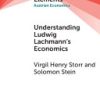
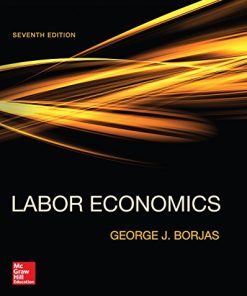
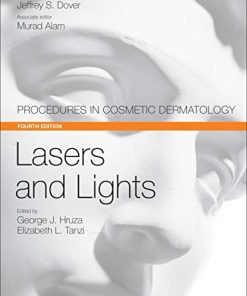
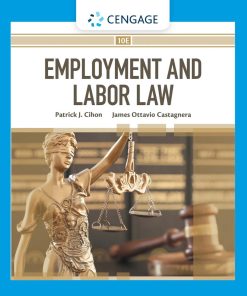
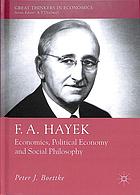
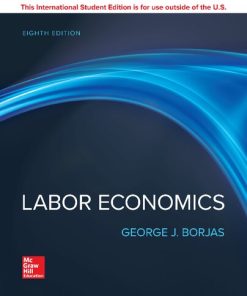
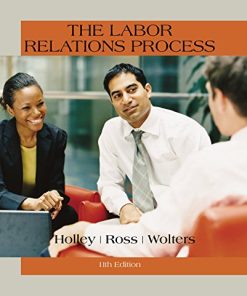
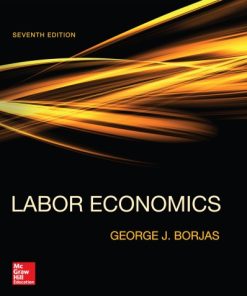
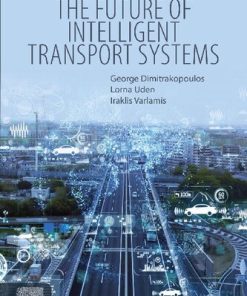
![Takin' Care of Business 1st Edition George Case [George Case]](https://ebookmass.com/wp-content/uploads/2024/04/takin-care-of-business-33190412-247x296.jpg)